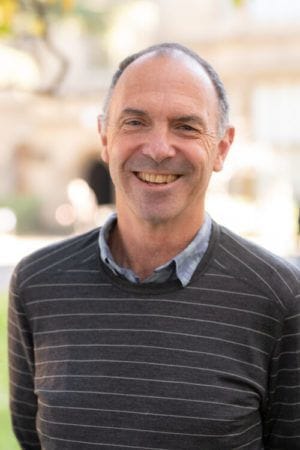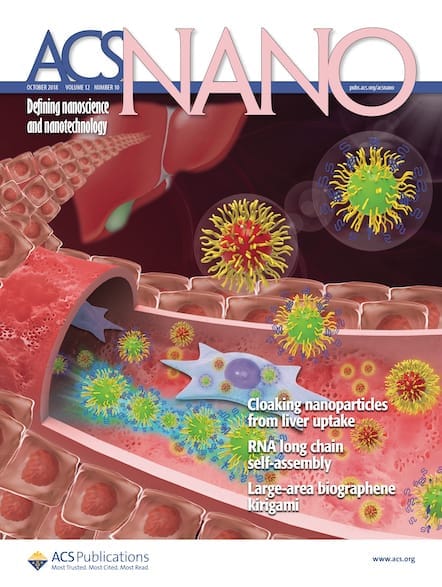Paul Mulvaney is the Laureate Professor of Chemistry in the School of Chemistry at the University of Melbourne and is the Director of the ARC Centre of Excellence in Exciton Science. Professor Mulvaney received his Ph.D. from the University of Melbourne in 1989 while working on electron transfer kinetics with Professor Franz Grieser. His other […]


Can you please tell me about your current work on assembly of nanocrystals?
Like many groups, we have been making nanocrystals and nanoparticles in general for a long time. More recently, we have increased our focus on assembly. This is because it is now clear that a lot of proposed nanotechnologies from 10-20 years ago have struggled to make it because we simply don’t know how to process and build with nanoscale materials, except in a rudimentary way.
Nanocrystals provide a nice model for such studies as we can control the way they assemble and the spacing between them. But there is a long way to go! Self-assembly combines materials science, elegant chemical synthesis and, colloid chemistry. I think there is quite a lot to be done. We have been focusing on building ordered arrays of nanocrystals and trying to figure out good ways to achieve this.
What are some problems that your research has helped solve?
A fundamental problem is how to build devices from single nanocrystals. We believe that the approach we are currently using (field-directed assembly) offers a useful pathway to large-scale assembly of uniform arrays. Since each particle is addressable, this will make it possible to build circuits and pattern microelectrodes around the nanocrystals. We hope this will help with the fabrication of devices based on the unique, size-dependent properties of nanocrystals.
What are some problems you’re currently trying to solve?
Brownian motion is the major problem. As particles become smaller, their random motion in the solvent becomes more significant, and it is harder to drive them into arrays. We have been able to get particles above 25nm into arrays consistently, but smaller ones – especially semiconductor nanocrystals- are proving more difficult. Ultimately, we’d like to be able to position single molecules in cavities, but these will probably need to be large molecules, such as proteins.
What are some applications of nanocrystal arrays the general public may be familiar with?
One of the easiest applications to imagine is in biosensing. We can study the interactions of molecules in the fluid with every single particle in an array in real-time. Binding events can lead to changes in light scattering or fluorescence, depending on the nature of the particles. Being able to detect the presence of a specific biomolecule with a single nanocrystal will drastically increase the sensitivity of bioassays and may also speed up detection. An obvious application of this would be in tests for diseases such as covid, STDs, and bacterial infections.
Can you briefly tell us about the importance of assembly, self-assembly of nanocrystals and its recent advancements?
Directed assembly is important for device applications, but nanocrystals will also self-assemble into superlattices if they do not like the solvent they are in. The way this superlattice forms, the dynamics of formation and growth, and the crystal structures that are generated are each controlled by numerous interlinking factors such as the nanocrystal size, charge, polydispersity, surface coating, and the solvent.
We still do not understand how materials are assembled by Nature into functional materials such as teeth or bone. The self-assembly of nanocrystals provides a great model. Some of the interesting approaches that have helped the field include the use of DNA as a cross-linking agent [Mirkin], the use of laser writing [Feldmann], and the creation of 2D and 3D binary lattices [Murray, Talapin].
What do you think is the most interesting or important unsolved problem in your field?
At present, I think the most interesting open question is how energy and/or charge carriers flow through superlattices and whether this provides a mechanism for creating better solar cells or LEDs. Another interesting question is the nucleation of superlattices and whether superlattices can be created with well-defined morphologies. There are parallels with atomic clusters such as those of sodium metal, which form closed shells.
Are there any unconventional methods you may have to help develop new and novel ideas?
Being nanoscale means that optical methods may be of limited use. I believe that X-ray-based methods for structure determination and for time-resolved measurements of superlattice growth may provide important new insights. These are becoming cheaper and easier to access.
Have you received any good advice that stuck with you? How has it helped you within your career?
The best advice I have received was very simple: Have fun!
What advice would you give people who want to pursue a career in science? If you had to start over again, what advice would you give yourself?
I think that most scientific research helps human society in the long run. I think you need to be patient, follow your nose, be open to new ideas, and of course to have fun!
